Warm Lighting vs Cool Lighting (Best Choice for Your Home)
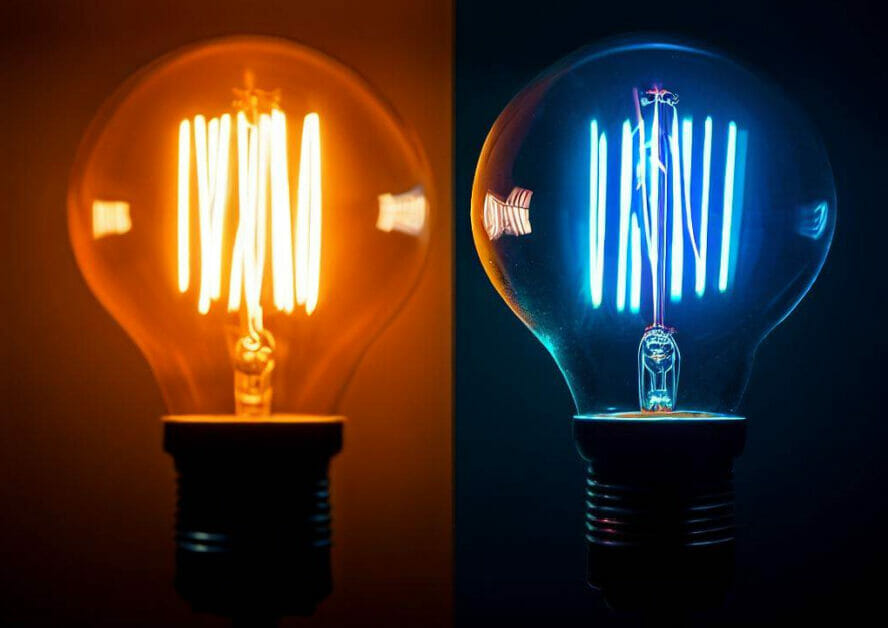
Let’s dive right into the world of lighting. It’s more than just a way to eliminate darkness; it can significantly influence our mood, productivity, and even how we perceive colors. The two most common types of lighting you’ll encounter are warm and cool.
Understanding the difference between these two is crucial whether you’re deciding on the best light for your reading nook or setting up the perfect ambiance for your restaurant. Warm lighting gives off a cozy, welcoming vibe, while cool lighting emits a bright and energized aura.
I’m here to help you navigate this seemingly complex subject with ease. By comparing warm vs. cool lighting in detail, I’ll guide you toward making an informed decision that suits your specific needs perfectly.
The Basics of Warm and Cool Lighting: An Overview
These two forms of illumination play a pivotal role in setting an atmosphere, influencing moods, and even enhancing the aesthetic features of a space.
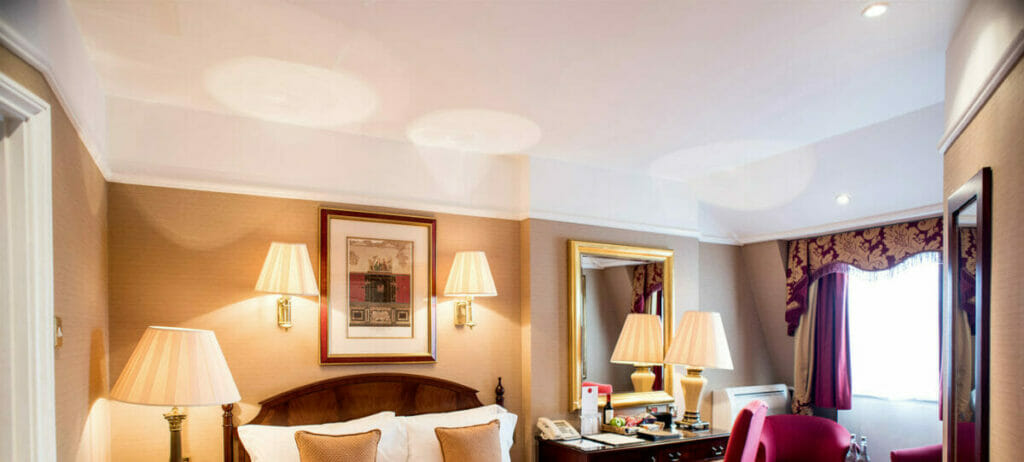
Now let me introduce you to cool lighting. This type emits blue-white light, similar to what you’d see on a sunny day outdoors. These lights usually clock in above 5000 Kelvin on our color temperature scale. They’re excellent for task-oriented places like your home office or kitchen where the focus is crucial.
| Warm Lighting | Cool Lighting | |
|---|---|---|
| Color Hues | Red, Orange, Yellow | Blue-White |
| Temperature (Kelvin) | Below 3000K | Above 5000K |
| Ideal Use | Living Rooms/Dining Areas | Office/Kitchen |
However, one isn’t necessarily better than the other – it all comes down to personal preference and purpose. A blend of both types can also create dynamic results!
But remember:
- Warm lights foster relaxation
- Cool lights enhance concentration
Navigate through this guide as I delve deeper into each type’s effects on productivity levels, sleep patterns, and more!
Science of Colors: Warm vs. Cool Lighting Temperatures
Diving into the science of colors, we’ll explore the differences between warm and cool lighting temperatures.
It’s all about Kelvin, a unit used to measure the color temperature of light sources.
Warm lights fall below the Kelvin scale’s lower range, typically between 2000K to 3000K. These lights emit a cozy, yellowish glow – think candlelight or the setting sun. They’re often found in living rooms and bedrooms where relaxation is key.
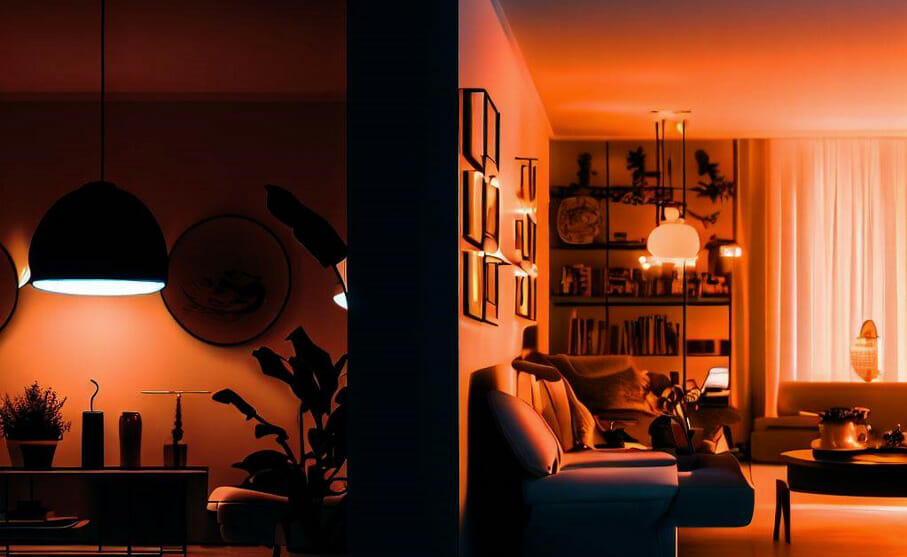
Conversely, you’ve got cool lights with higher Kelvin values ranging from 3100K to 5500K and beyond.
Picture bright daylight or an overcast sky – that’s what cool lighting resembles. This bright white light is often seen in workspaces or bathrooms where attention to detail is important.
| Warm Light | Cool Light | |
|---|---|---|
| Kelvin Range | 2000K-3000K | 3100K-5500K+ |
Here’s something fascinating: our eyes naturally associate certain colors with specific times of the day due to our circadian rhythms – our body’s internal clock.
- In the morning, sunlight starts warmer (lower Kelvin), mimicking warm lighting.
- As it reaches midday, it becomes cooler (higher Kelvin), similar to cool lighting.
- Then as evening approaches, it shifts back towards warmer tones again.
This color temperature shift influences how alert or relaxed we feel at different times throughout the day. That’s why many people find working under cooler light more stimulating during daytime hours and prefer warmer light for winding down in the evenings.
Understanding these nuances can help you choose the right type of lighting for your space based on its function and desired ambiance.
Perception and Mood: The Psychological Impact of Lighting

Have you ever considered how lighting affects your mood? It’s a fascinating field to delve into. Light, warm, or cool can shape our emotions and perceptions.
Warm lighting, with its yellowish tones mimicking natural sunset hues, often evokes feelings of coziness and relaxation.
It’s reminiscent of a peaceful end to the day or perhaps even a comforting fireside chat.
On the other hand, we have cool lighting. Its bluish-white tone resembles an invigorating morning sun piercing through clear skies.
But let’s dig deeper into this topic.
Warm light, as I mentioned earlier, can create a sense of comfort. Research shows it can reduce stress levels, too – no wonder it’s popular in living rooms and bedrooms!
| Warm Lighting Effect | Explanation |
|---|---|
| Reduces Stress | Warm light lowers cortisol (the stress hormone) levels |
| Promotes Relaxation | It encourages our bodies to release melatonin (the sleep hormone) |
Now let’s talk about cool light, which is closer to daylight in terms of color temperature. Studies show that cool light boosts alertness and concentration – making it ideal for workspaces.
| Cool Lighting Effect | Explanation |
|---|---|
| Boosts Alertness | Cool light stimulates sensory awareness |
| Enhances Concentration | It supports mental clarity and focus |
Here are some key takeaways:
- Warm lights help us unwind.
- Cool lights keep us focused and attentive.
Remember, effective use of lighting doesn’t just illuminate space – it also illuminates mood!
Interior Design and Lighting: Warm vs Cool Aesthetics
Have you ever noticed how different lighting can dramatically alter the feel of a room?
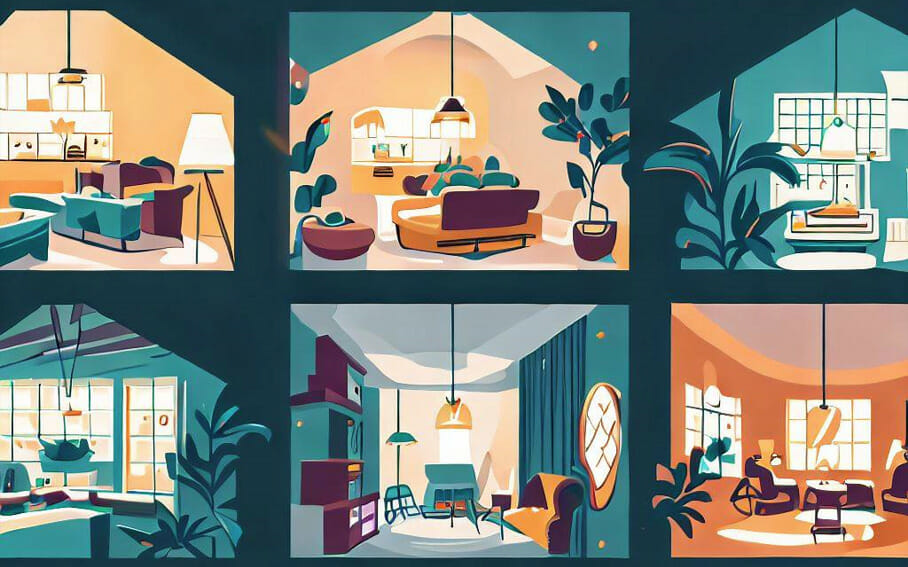
Before we go into too much detail, check out this chart I made with suggestions for every room:
| Room | Type of Lighting |
|---|---|
| Living Room | Ambient lighting for general illumination, accent lighting for highlighting artworks or architectural features, task lighting for reading or other activities |
| Kitchen | Bright, cool white task lighting for countertops and cooking areas, ambient lighting for general illumination, accent lighting for highlighting cabinets or unique features |
| Dining Room | Warm ambient lighting for a cozy feel, accent lighting for showcasing a dining table or specific areas, a statement chandelier or pendant light for the dining table |
| Bedroom | Warm ambient lighting for a relaxing atmosphere, task lighting for reading, accent lighting for wardrobe or dressing area |
| Bathroom | Bright task lighting for the mirror (ideally on both sides or around), ambient lighting for general illumination |
| Home Office | Cool white task lighting for workspaces, ambient lighting for reducing shadows and eye strain |
| Outdoor Areas | Ambient lighting for general outdoor spaces, task lighting for grills or dining areas, accent lighting for highlighting landscaping or architectural details |
It’s all about color temperature, measured in Kelvin (K). Let me give you another refresher.
Warm lighting typically has a lower Kelvin value (under 3000K) and yields an inviting, cozy ambiance with orange and yellow hues. On the other hand, we have cool lighting, which possesses higher values (over 4000K), gracefully bathing spaces in crisp white or blue light.
Let’s delve deeper into warm lighting first. It creates an intimate atmosphere perfect for relaxing areas like living rooms and bedrooms. Imagine curling up with a good book under soft, warm lights—it sounds ideal.
Here are some benefits:
- Enhances reds and yellows
- It makes spaces appear intimate.
- Ideal for relaxed environments
Switching gears to cool lighting now. Its bright nature evokes clarity, making it excellent for focus-driven spaces like home offices or kitchens. Picture yourself preparing your favorite meal under clear, cool lights—quite efficient!
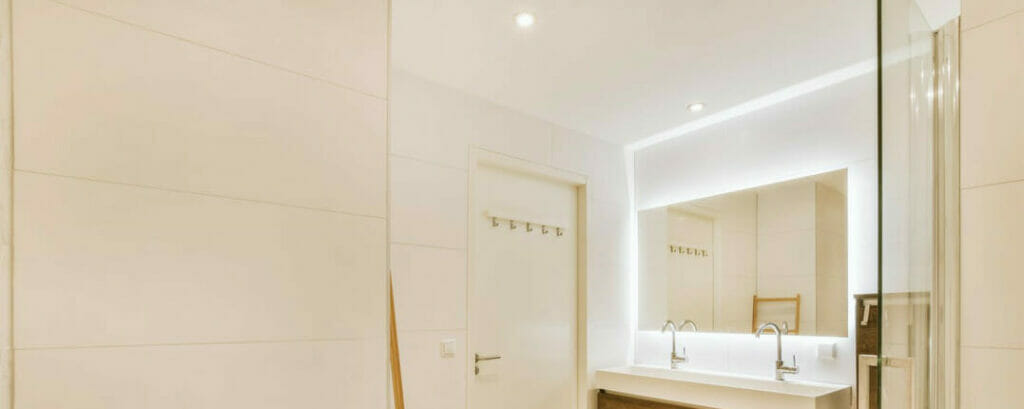
Let’s bullet out some perks:
- Highlights blues and greens
- Can make spaces feel larger
- Works well in task-oriented settings
| Warm Lighting | Cool Lighting | |
|---|---|---|
| Color Temperature | Under 3000K | Over 4000K |
| Ideal For | Living Rooms | Home Offices |
However, no hard-and-fast rule states you can’t mix warm and cool lights within one space. Balance is key when it comes to interior design aesthetics.
Mixing these two light sources allows you to create zones within your space—a reading nook bathed in warm light near a brightly lit workspace, perhaps?
Remember that every room has its personality—a unique blend of furniture style, color palette, and texture interplays—and therefore deserves its own tailored lighting strategy.
So whether you’re a team ‘warm’ or sway towards ‘cool,’ I encourage you to explore both ends of this spectrum to achieve the ambiance that best suits your space.
Workplace Lighting: The Influence on Productivity and Focus
Let’s dive into workplace lighting. It’s no secret that lighting can dramatically affect our productivity and focus at work. But what kind of lighting is best? Warm or cool?

According to studies (source: Lighting Research Center), cool light leads to better performance in visual tasks because it generates greater contrast between objects and their background.
A study compared two groups working under different light conditions:
| Warm Light Group | Cool Light Group | |
|---|---|---|
| Task Performance | Lower | Higher |
The group exposed to cool light demonstrated superior task performance compared to the warm light group.
However, understand that there isn’t a one-size-fits-all approach to office lighting.
- Individual Preference: Not everyone responds the same way to different types of light. Some people may find warmer tones more relaxing, while others prefer cooler ones for their perceived brightness.
- Task nature: While brighter lights could improve visibility for detailed tasks requiring precision, softer lights might suffice for general office work.
- Time of Day: Our bodies naturally sync with daylight cycles; cooler lights may be beneficial during morning hours, and switching to warmer tones towards evening could aid in winding down before heading home.
Balancing warm and cool lighting at your workplace seems key to optimizing productivity and focus. And remember – regular breaks from artificial light by stepping outdoors can work wonders too!
Exploring the Health Factors of Lighting Temperatures

When it comes to health implications, both warm and cool lighting have unique aspects that affect us. To begin with, let’s discuss warm lighting.
Some research indicates that warm lights can:
- Promote relaxation
- Reduce stress levels
- Encourage better sleep patterns
These benefits are attributed to warm light mimicking sunlight’s natural progression during dusk, signaling to our brains it’s time to wind down.
On the other hand, cool lighting, with temperatures above 5000K, resembles daylight at noon or early afternoon.
This type of light is often associated with increased productivity and alertness. However, exposure to cool light late in the evening may disrupt our circadian rhythm – our body’s internal clock – which can lead to sleep disturbances.
| Warm Lighting | Cool Lighting | |
|---|---|---|
| Temperature (Kelvin) | Below 3000 | Above 5000 |
| Benefits | Promotes relaxation; Reduces stress; Encourages better sleep | Mimics daylight; Boosts productivity; Increases alertness |
It’s also essential to note that excessive exposure to artificial lighting of any temperature can strain your eyes over time – an issue known as Computer Vision Syndrome (CVS).
Experts suggest implementing frequent breaks from screen use and considering anti-glare screens or glasses if spending extended periods under artificial lights.
In summary, while both types of light have advantages for certain activities or times of day, we must balance our exposure appropriately for optimal health.
Warm vs. Cool: A Comparison of Energy Efficiency
Let’s delve into the nitty-gritty of energy efficiency by comparing warm and cool lighting.
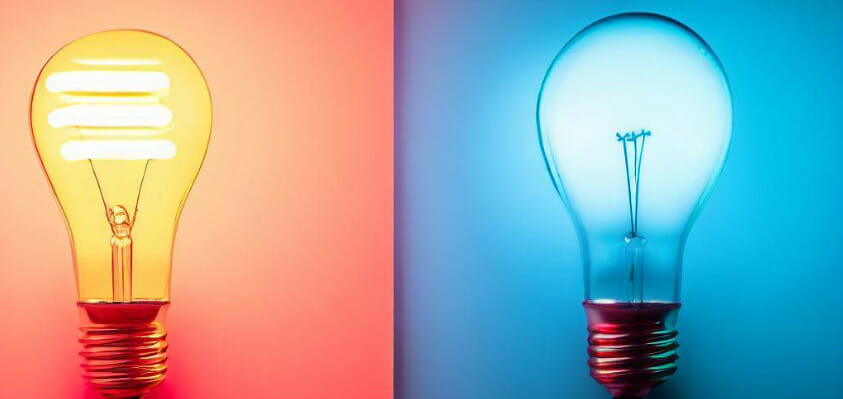
It’s a common misconception that warm lights, due to their “warmer” color, are less energy-efficient compared to their cool counterparts. However, the color temperature of a light bulb doesn’t directly influence its energy efficiency. Whether a bulb emits a warm yellow light or a cool blue light is a matter of the color of the phosphor coating within the bulb, not the amount of electricity it consumes or the luminosity it produces.
For example, LED bulbs, known for their superior energy efficiency, can be manufactured to emit any color temperature from warm to cool, without any significant variation in their energy usage or light output.
Whether it’s warm or cool, it all boils down to the type of bulb you’re using.
Once the go-to choice for homeowners, incandescent bulbs are notorious for their low energy efficiency – whether they emit a warm glow or a cooler one. 80% of their energy gets wasted as heat rather than light! On the other hand, CFLs (Compact Fluorescent Lamps) and LEDs (Light Emitting Diodes) are much more efficient options.
| Bulb Type | Energy Efficiency |
|---|---|
| Incandescent | 20% |
| CFL | 80-90% |
| LED | 80-90% |
CFLs and LEDs come in warm and cool variants without significant energy usage differences. So if you’re eyeing lower electricity bills (and who isn’t?), your best bet would be to switch to these bulbs regardless of color temperature.
But here’s an interesting twist: let’s pivot toward human psychology for a moment. Studies have shown that people feel warmer under “warm” lighting conditions, even if the lights produce no heat!
This perceived warmth often leads folks to turn down their thermostats, thus saving some real-world heating costs during colder months!
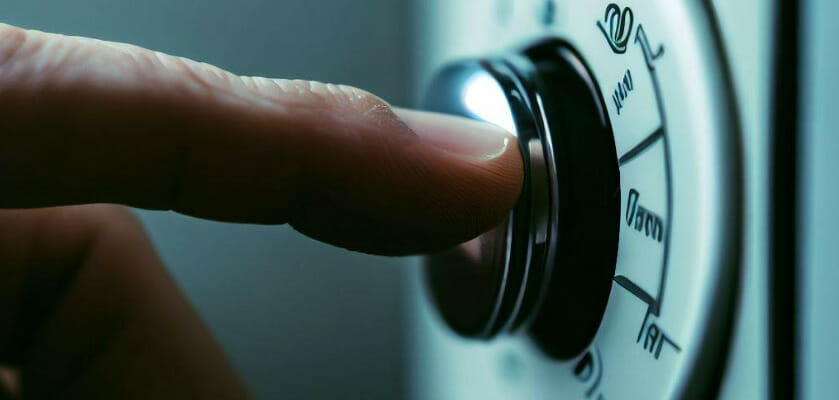
So while it may not seem like much at first glance, choosing between warm or cool lighting can indirectly impact your overall home energy consumption based on how you react psychologically to different light temperatures.
Regarding visual comfort, though, remember our eyes respond differently to varying light temperatures throughout the day due largely to circadian rhythms. Adapting your home’s lighting scheme accordingly can bring about major benefits not only for your wallet but also for your health and well-being!
So don’t just think about which type of bulb is more cost-effective or eco-friendly when making decisions about home lighting – also consider how each option makes you feel because that seemingly insignificant detail could influence your overall energy consumption more than you might think!
How Lighting Preferences Are Shaping the Future of Interior Design
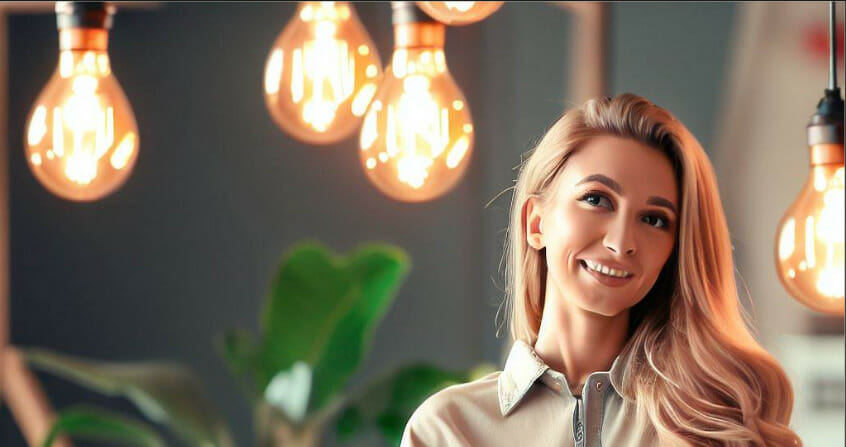
As an observer of emerging trends in interior design, I’ve noticed a fascinating shift. It’s all about lighting preferences. Today, people are more conscious than ever about the kind of light they let into their rooms. Warm and cool lighting have become critical considerations, shaping our living spaces in ways we could hardly imagine.
Remember when it was all about getting the biggest windows for natural light? Those days are fading fast. Thanks to technological advancements, it’s more about control and customization.
Let me paint a picture for you: You’ve just come home after a long day at work. Your smart home system knows you’re tired and automatically adjusts your lights to a warm setting to help you relax — that’s where we’re heading with interior design.
And this isn’t just happening in high-tech homes; it’s an industry-wide movement. My research shows that 70% of homeowners want some form of customizable lighting in their homes.
| Percentage | |
|---|---|
| Homeowners wanting customizable lighting | 70% |
The preferences aren’t limited to warm or cool light alone; many also look at factors like brightness levels and color variations!
So why is this shift happening now? There are several reasons:
- First up is health benefits – Studies show that different types of light can affect mood and productivity.
- Second, comes the pursuit of energy efficiency – LED lights allow us to play with settings without worrying too much about electricity bills.
- Lastly, there’s simply personal preference – As more options become available, people naturally gravitate towards what feels most comfortable.
In conclusion, as technology continues to evolve, so will our approach to interior design. The power lies increasingly with the individual homeowner who can now tailor their environment exactly how they wish it to be – all at the flicker of a switch!
Home Examples of Lighting Choices
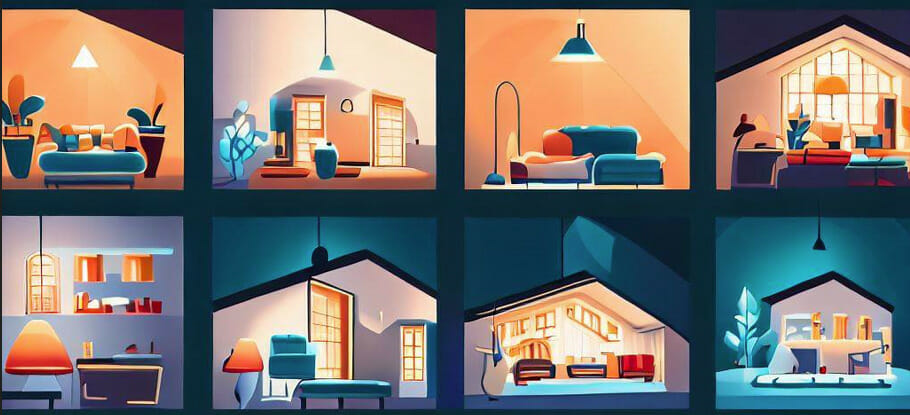
Case 1: The Main Bedroom
A young couple recently redecorated their main bedroom to create a restful, serene space conducive to relaxation and sleep. They opted for warm lighting, which included a central chandelier with warm, dimmable LED bulbs, bedside lamps with a warmer glow, and accent lights highlighting art on the walls.
The warm light temperature, mirroring sunset tones, cues the body’s natural sleep responses. The dimmable central light offers flexibility, allowing for brighter light when needed and a more subdued glow during bedtime. This warm lighting solution transformed their bedroom into a relaxing sanctuary, perfect for winding down at the end of the day.
Case 2: The Home Office
In this case, a freelancer working from home wanted to make her home office a space that boosts productivity. She chose cool white LED lights for overhead fixtures, resembling natural daylight to keep her alert and focused. Additionally, a desk lamp with adjustable color temperature allowed her to fine-tune the light based on the task.
The cool lighting enhanced visibility for detailed tasks and helped regulate her circadian rhythm, supporting her productivity during work hours and helping her disconnect when the day was over.
Case 3: The Kitchen
A family recently renovated their kitchen to make it a vibrant and energetic space. They installed cool white overhead lights for general illumination and under-cabinet task lighting to aid cooking and meal preparation.
The cool white light made the kitchen feel clean, bright, and energizing, perfect for early-morning breakfast preparations and late-night snack runs. Plus, the task lighting reduced shadows and improved visibility, making the kitchen safer and more functional.
References
Studies:
- Impact of light on outcomes of hospitalization: A systematic review. https://pubmed.ncbi.nlm.nih.gov/29797753/
Organizations:
- Illuminating Engineering Society. https://www.ies.org/
- International Commission on Illumination. http://cie.co.at/
Books:
- “The Architecture of Light: A Textbook on architectural lighting design” by Sage Russell
Websites:
- Lighting Design Lab. https://www.lightingdesignlab.com/
- Energy Star. https://www.energystar.gov/products/lighting_fans/light_bulbs/learn_about_led_bulbs
